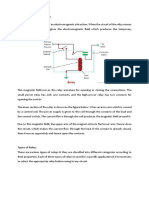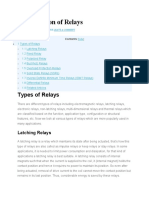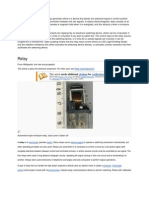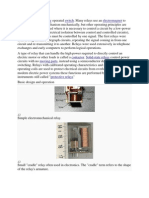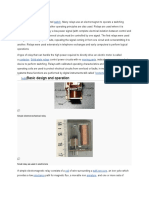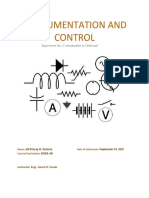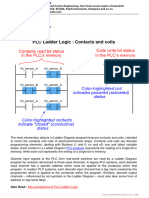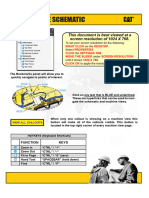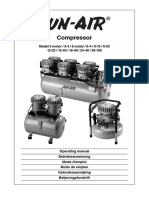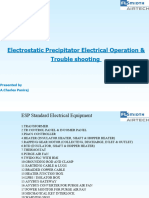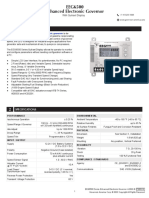0% found this document useful (0 votes)
62 views12 pagesRelay Notes
A relay is an electrically operated switch that controls circuits using low-power signals, consisting of components like an electromagnet, movable armature, and contacts. There are various types of relays, including electromechanical, solid-state, hybrid, and thermal relays, each with distinct operational principles and applications. Relays are commonly used for circuit isolation, controlling multiple circuits, and providing protection against overloads in electrical systems.
Uploaded by
omaribnayubCopyright
© © All Rights Reserved
We take content rights seriously. If you suspect this is your content, claim it here.
Available Formats
Download as DOCX, PDF, TXT or read online on Scribd
0% found this document useful (0 votes)
62 views12 pagesRelay Notes
A relay is an electrically operated switch that controls circuits using low-power signals, consisting of components like an electromagnet, movable armature, and contacts. There are various types of relays, including electromechanical, solid-state, hybrid, and thermal relays, each with distinct operational principles and applications. Relays are commonly used for circuit isolation, controlling multiple circuits, and providing protection against overloads in electrical systems.
Uploaded by
omaribnayubCopyright
© © All Rights Reserved
We take content rights seriously. If you suspect this is your content, claim it here.
Available Formats
Download as DOCX, PDF, TXT or read online on Scribd
/ 12










